
![]()

Let's get back to the creation process: how do you go about designing each different map?
In the beginning, we start with a sheet of graph paper -- just draw mountains and rivers and so forth on it. Then we get that into digital form on a PC so it can be playtested. At this point, there's still really no visuals to the level; sometimes it's literally just the word "RIVER" and such onscreen. (laughs) That's how playtesting begins.



So what sorts of things are you looking for in playtesting level designs? What makes a good level and what makes a bad one?
Well, there are a few patterns... Hmm, this is a tough question...
One thing that I notice, and I think this is the case with Advance Wars as well, is that a good map needs to have a directed purpose -- something that you want the player to actively experience. It's nice if a map looks really flashy, but ultimately it's more exciting for the player if, for example, there's a crisis point they have to fight through, or some other concept that defines the map. I think the more maps that have those kind of defined concepts, the better the final game.
So when you're making a map, you're thinking of the way you want the player to experience it? What about allowing freedom to account for different play styles?
I think you need to provide for both cases. With this game, some of the maps were built around a directed purpose, while others were built to allow more freedom. Personally, I prefer maps that are structured kind of like puzzles, where you have to do certain things, cover this and that area, and it's "solved" once you do that. But if you have a lot of different people try a map like that, some of them may just never figure it out... So you have to try and strike a balance keeping all that in mind.

Speaking of balance, what about difficulty -- don't you lose perspective on judging what's too easy and what's too hard when you're playing the game over and over for months?
The playtest sessions help keep you objective. We have a variety of people test out levels -- not just people familiar with Fire Emblem, but also people who've never played it before. That feedback is our guideline when it comes to difficulty.
So what would you say is the hardest part of making a good Fire Emblem game?
Well, this is a game where you're controlling a large number of characters through a fairly epic-sized story, so you have to make sure the narrative is extensive enough that players care about what they're playing -- but at the same time, too much story can hamper the gameplay experience. Balancing that is the hardest thing, I'd say.
To figure out the right mix, we had people write up reports during their playtest sessions outlining the characters they used in each chapter, whether they leveled them up or not, their general impressions of the level -- that sort of thing. It was always interesting how different people would be so cold toward some characters and use others all the time. Anyway, those reports helped give us a good sense of which units people might want to see more of in the main story.
So I'm curious -- if you guys had to fill out that report on your own game, who are your favorite characters, both in terms of story and who you end up using most in battle?
My favorite character? Hmm... Well they aren't really part of the main cast, but among the male troops, I like Gregor, and for the women, I'd say Tharja.
With Tharja, I just really like her design, how she looks. And with Gregor, you have this middle-aged man who's proportioned pretty realistically for his age, and I guess that just resonates with me for some reason. (laughs) As for strategically useful characters -- like I mentioned, I tend to go all-out offense, so I use a lot of sword-wielding characters and manaketes.

Storywise, I have to go with the Avatar character [that the player creates]. You can change his or her appearance and voice and so forth as much as you like, which really increased my affinity for that unit especially. In battle, I like Tharja, because she's really strong. (laughs)
I think Cynthia is my favorite story character. She had to go through a great deal of difficulty, but she still tries to be as bright and cheerful as possible no matter what, which I think is pretty cute. Battle-wise, I like characters with few weaknesses, so I use the two cavaliers a lot, Stahl and Sully. They move fast, and as long as you don't run into someone carrying a Beast Killer, they're a pretty reliable presence on the front lines. I have to agree with Maeda-san, though; Tharja is pretty strong. (laughs) She's pretty much the perfect fighter.

In Japanese interviews I usually say Lucina for this question. I really like her, but I don't want to be pinned down to one person because Tharja isn't bad, either.
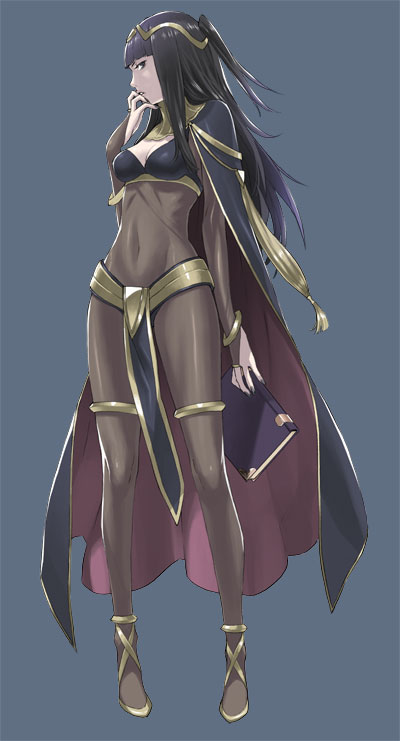
(laughs) We can't all say Tharja!
Well, she's a popular character! She's strong and has a really interesting personality. Lucina was a character that survived from the very first concepts; she's a really fascinating woman, visually as well... Hmm, I like Severa, too -- I guess I mostly like women. (laughs) But she's very easy to understand, and as a sword user, pretty strong as well.
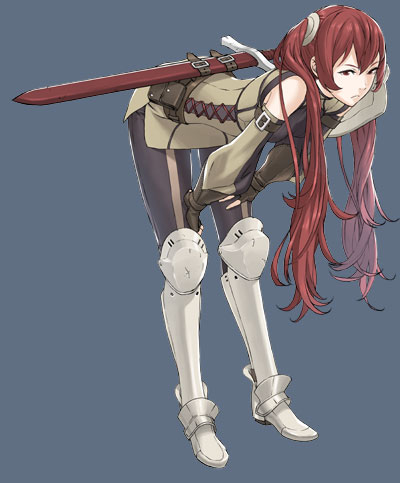
Let's talk a bit about the story -- without giving anything away, the story has some pretty big, surprising twists. Were those all planned that way from the start?
It depends. For example, the true identity of Marth was something we had decided upon from the beginning, but a lot of the other twists came about naturally during development. We'd complete a section, and then it'd get passed around Nintendo and the rest of the office. As this or that part of it would be adjusted, we'd start to say "Let's add more to this element of it," and eventually it'd develop into these twists. I think most of them got their start on the Nintendo side.
What about all the characters? How do you determine what their personalities would be like?
With all the major characters we have an overall story that we want to tell, and we basically assign characters roles which we feel they'll fit the best. Meanwhile, with the sub-characters who don't figure as much into the main story, we field material from all kinds of different places as we build them. And then having good guys be flawed, or bad guys have some redeeming factors... These are things you'd often see in Fire Emblems from way back.
How do you go about writing all the dialogue and such for such a huge game?
It's certainly a team of people that's involved with writing the story. For example, with the support conversations, those mostly got divided up in terms of different writers saying "I want to handle this character!" and we'd divide it up like that...
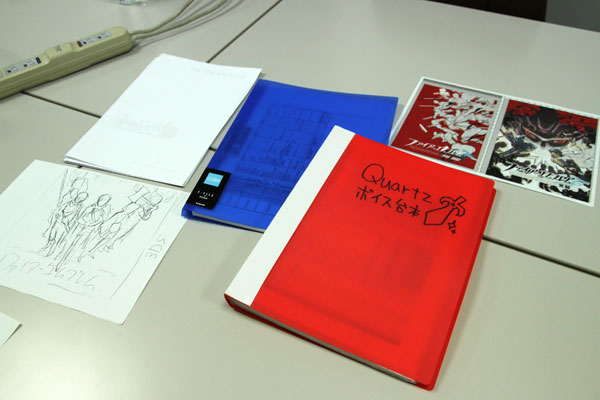
How do you keep everything straight? All the different ways characters talk and all their personality traits -- is there a big story bible someplace or something?
There is a document that defines all of the basic character traits, and the dialogue was written based off of that. There's also one person on the team whose job it was to check over all of this text and make sure that there aren't any contradictions or inconsistencies anywhere. It was definitely a lot of text for one person to go over. (laughs)
On to the visuals -- Awakening has a different style from any of the previous Fire Emblem games. Can you talk a bit about the direction you decided to go, and how you chose that?
There was definitely a movement with this project to give everything a fresh new look, so we wanted to find a character designer who could work in a different direction from previous FE games. The man we found was [Yusuke] Kozaki-san, who was involved with No More Heroes, which was a pretty well-received game overseas. That was actually part of the reason we hired him, since we were planning to release Awakening outside Japan from the start. Kozaki draws comics as well, and he's capable of coming up with a lot of different and varied characters on a common theme. So we asked him to come up with lively characters and a lot of different facial expressions...
One of the rules that Kozaki-san always tries to follow is that his character's basic personalities bubble up to the surface, so you can look at a character and immediately tell a fair amount about what's going on inside their mind. For example in Awakening, Gaius is a character who likes sweets, so Kozaki-san drew him literally carrying candy. His final concept art has him with this teddy bear-shaped lollipop attached to his clothes; he submitted that to Higuchi-san and was like "Hey, I don't know about this, but what do you think?" (laughs) And Higuchi-san said "Sure, why not?" I think that both IS and Nintendo had the same outlook in terms of trying to make a fresh new visual feel for the game...
For example, this was Kozaki-san's original idea for the game package. Nintendo thought it wasn't all that different from what they had before (with previous Fire Emblem games); they wanted something more like a group portrait. So it went through this whole process before reaching its final form... It's just one more thing that demonstrates the drive this time to do something very different from before -- not just coming from us, but from Nintendo as well.
No More Heroes: An action game developed by Grasshopper Manufacture for the Wii system that was released in 2008.
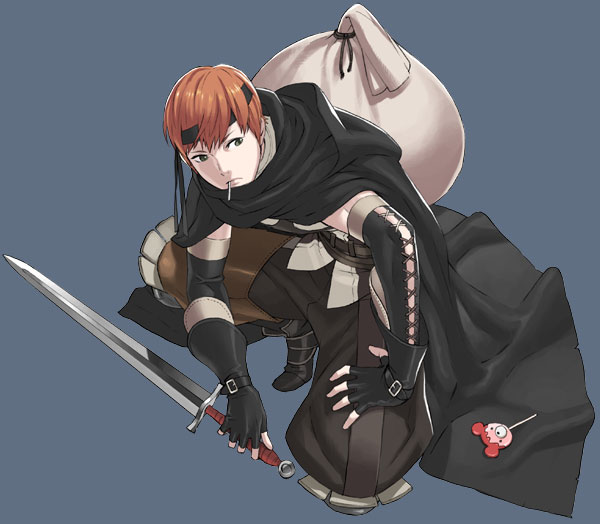
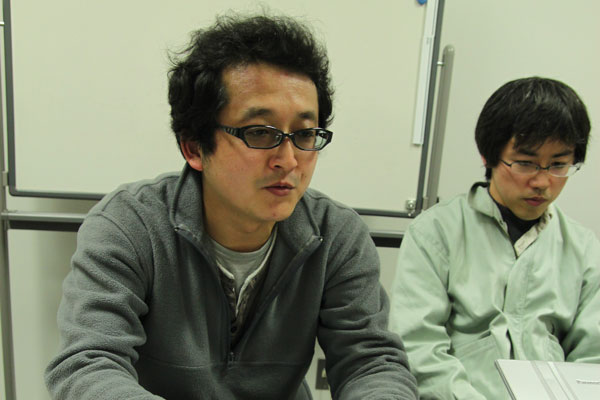
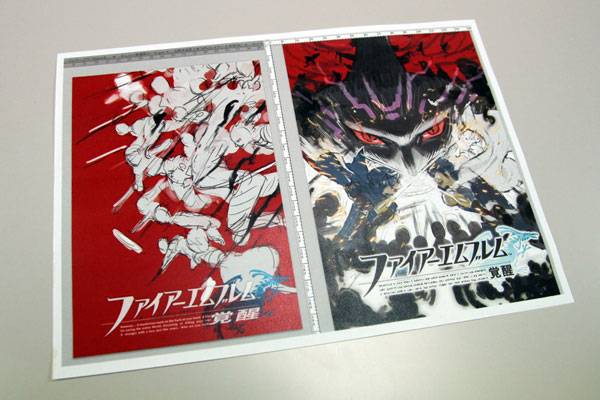
Speaking of doing something difererent, we have to ask a question a lot of the fans are wondering -- what happened with the feet? (laughs)
(Laughs) Well, they're there...they're just...omitted a little bit.
The idea was to add a unique sort of deformation to the characters. As for why it ended up like this... At the start of the project, we weren't entirely sure how many bones and joints we'd be able to use in each character model. As it is now, there's a joint at the knees, and then there's nothing below that for the ankles and the feet. This makes it a bit easier to apply animation to models as well. We found out afterward that, with the 3DS, we had more than enough CPU strength available to flesh out the models a bit, add real ankles and so on. We were like "Well, if there's a next time, maybe there'll be more ankles..." (laughs)
We thought we could make it something that would work well with the characters, but now I'm not so sure. (laughs) So it's hard to give a real reason for it, but...well, I think it's kind of cute, though! (laughs) Isn't it? They look like they're wearing high heels. Aren't high heels the big fashion these days?
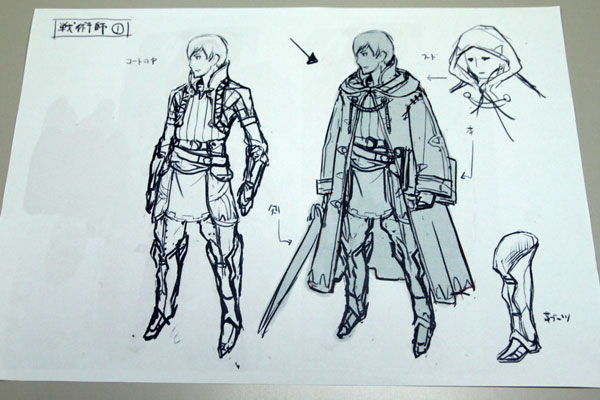
Did you get any feedback about this from Japanese players as well?
Yeah, some people focused on the feet a lot. (laughs) I think if this was a game that involved people kicking and such, we would have put in real ankles. Instead, you're using handheld weapons for the most part, so we figured we could sort of omit some of the detail down there...
We did get feedback about that in the playtesting sessions, but by that point it was like "Well, we can't do much about that now." (laughs)
A lot of people seemed really preoccupied with the feet... Ah, well. (laughs)






